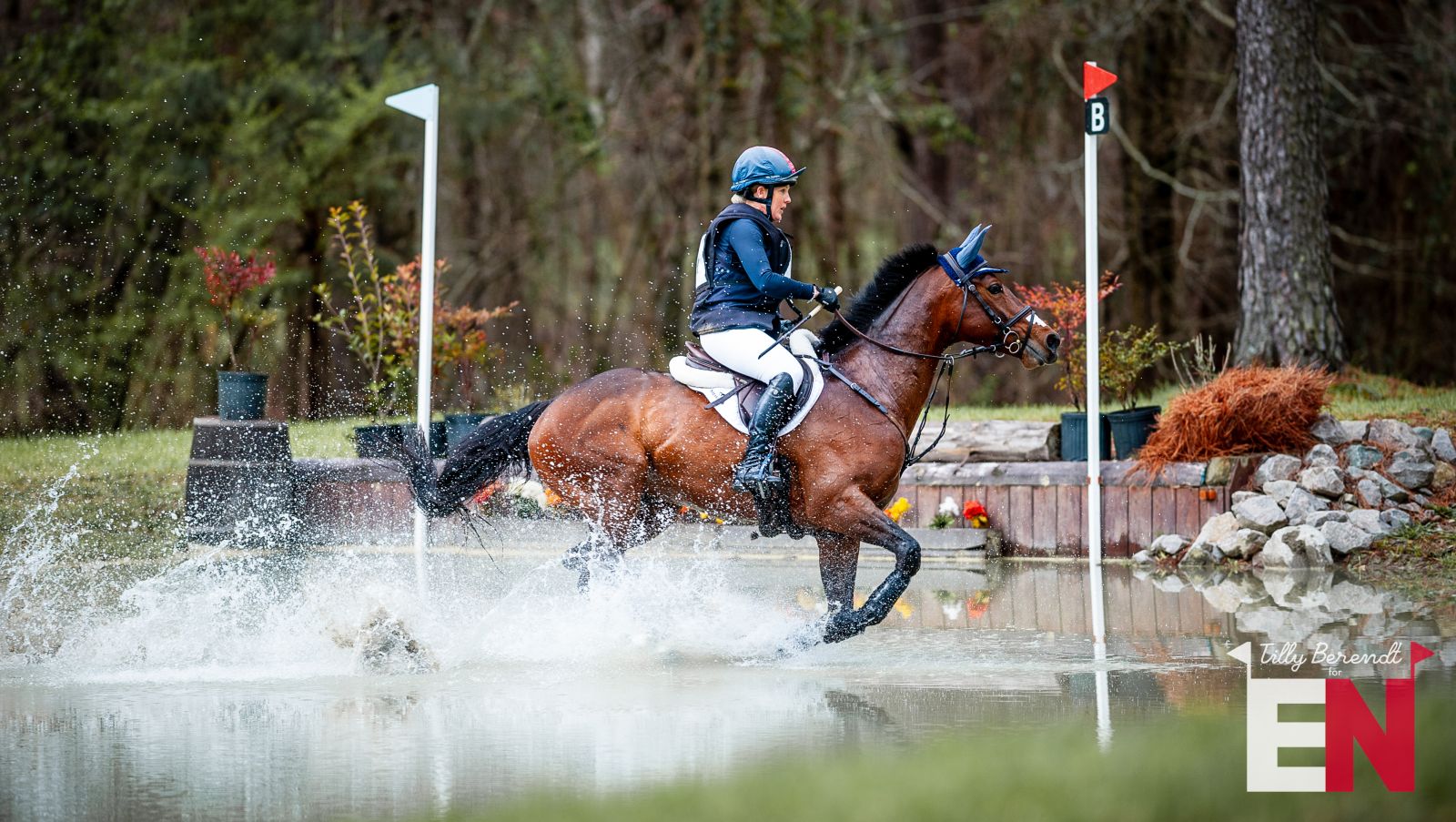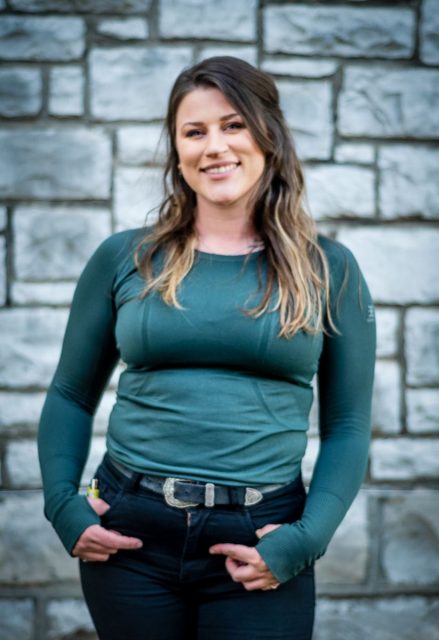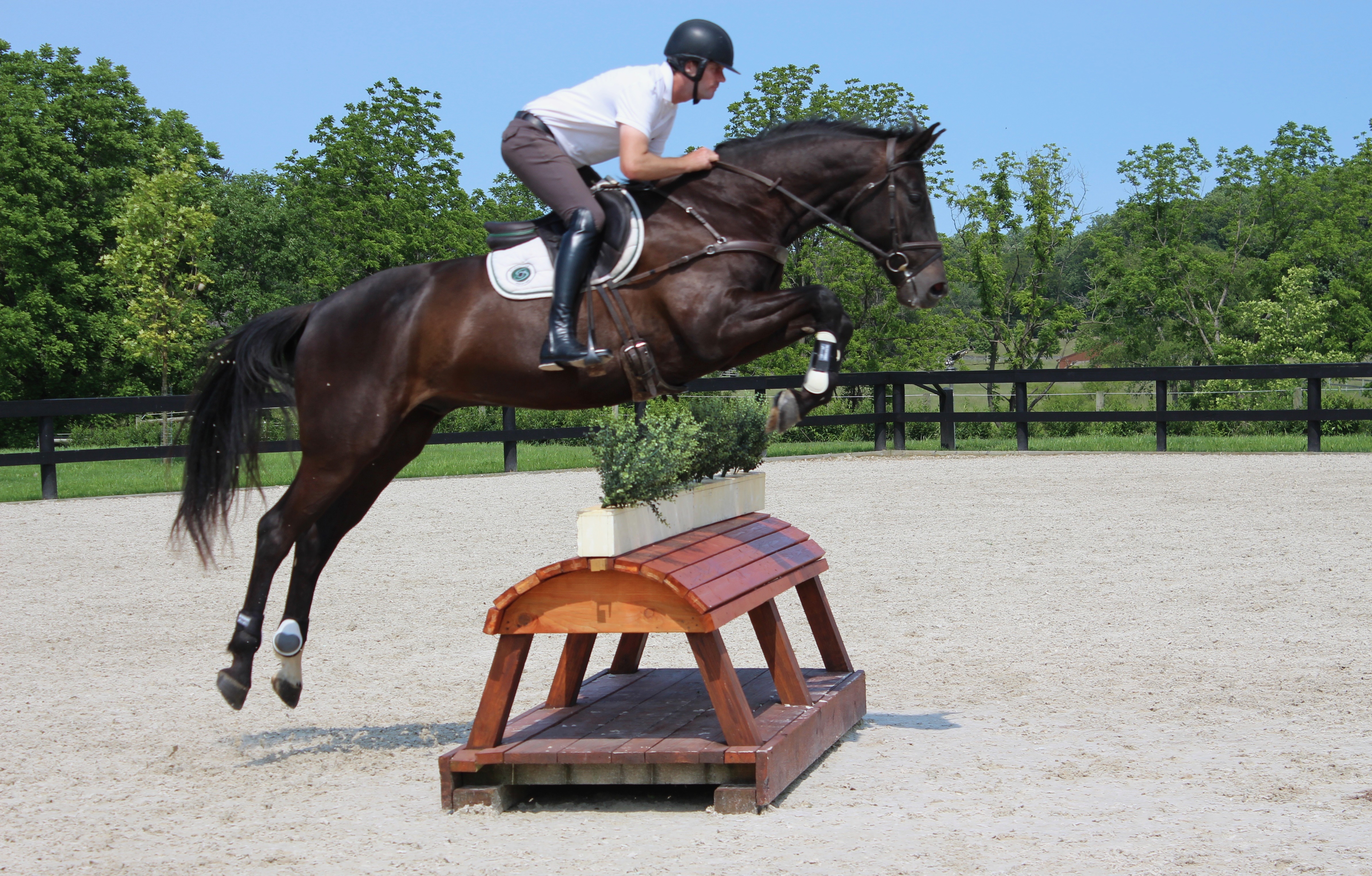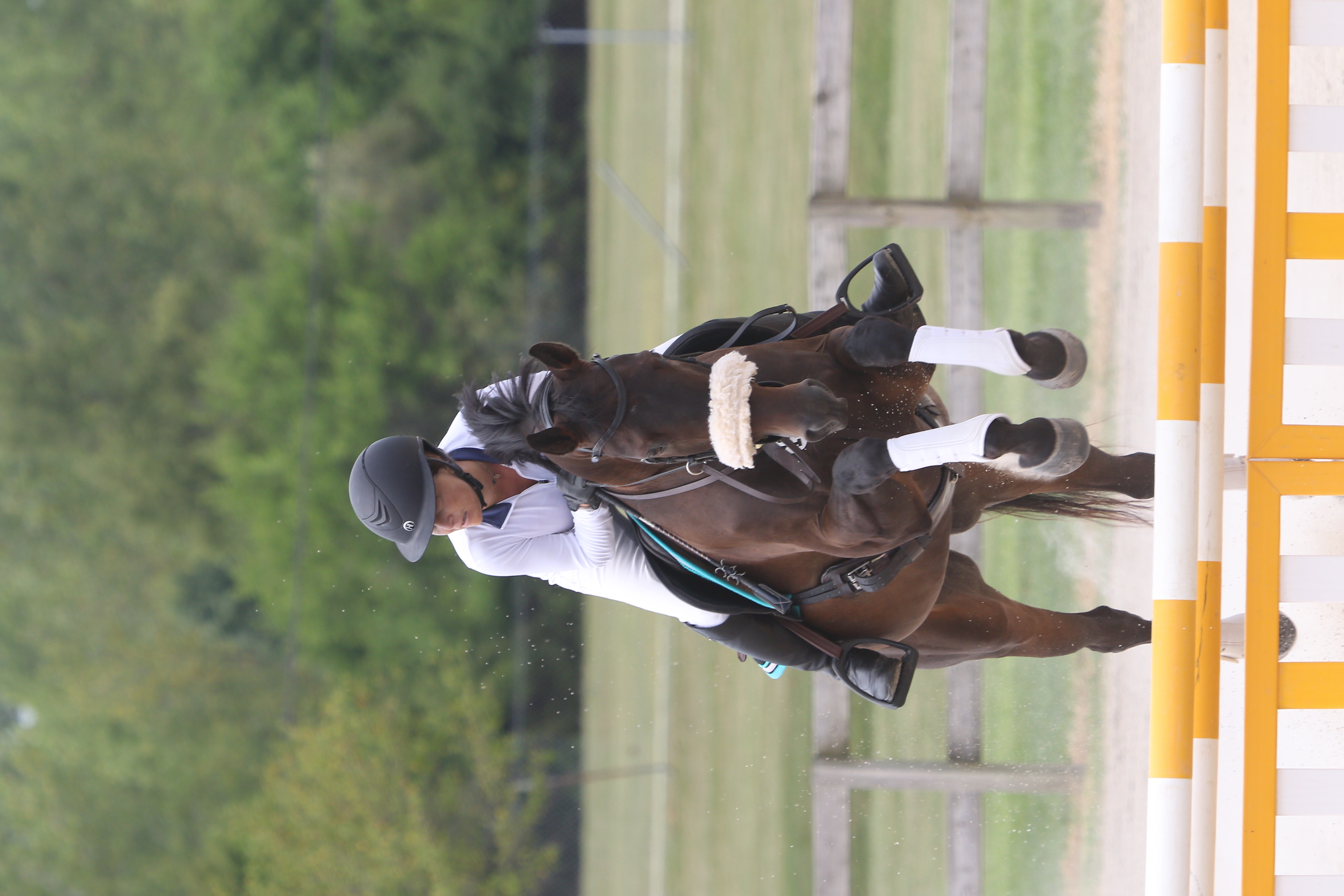
Endangered Red-Cockaged Woodpecker at Stable View. Images by Andrew Lydeard
When I’m binge-watching reels on #EventersofInstagram, I’m expecting to see training videos, tips, maybe some barn drama, or the person who inevitably posts tragic horse fails (can we please stop posting these?). What I wasn’t expecting was to see amazing videos on beekeeping and protecting the local Killdeer population from @StableViewAiken. Curiosity sparked, I did what any writer would do and got the full story from Barry Olliff, who owns Stable View with his wife, Cyndy Olliff.
Originally, Stable View was a quail hunting lodge. When Barry and Cyndy purchased the property in 2010, they bought the central 160 acres which contained the main building, which used to be the main barn, the kennels, and the woodshed, as well as the scrub land, which is now the cross country field. More recently, they purchased the surrounding 850 acres of conservation land to bring the total acreage up to 1000 acres. Because these 850 acres are technically in a conservation easement, Cyndy and Barry aren’t allowed to make money from this part of the property. Instead, they’re more focused on being good environmental stewards.
“What we set about doing was maintaining the trails and trying to create a good habitat for birds and animals,” Barry said. “And you do that by effectively returning the land back to the cycle that it would have had up to 100 years ago by having a habitat management program. And then you find the wildlife returns because it’s a better environment for them.”

American Kestrel Nestlings at Stable View. Photo courtesy of MPJ Consulting.
This habitat management program is carefully crafted in collaboration with the Long Leaf Alliance, Mark Pavlosky Jr of MPJ Wildlife Consulting, and, during the early years, flora and fauna expert Keith Bradley. Barry explained that a big part of the habitat management program includes performing controlled burns, in order to mimic the wildfire cycle that would have kept heavy undergrowth at bay 200 years ago. “The way the husbandry works in terms of looking after the land, you manage these fires, you have controlled burns,” Barry said. “You have a system and you go out and you burn certain parts on a rotation, which sort of keeps the safety aspect of it sensible because it doesn’t get out of control. And if you do that every three or four years, you go across parts of the property and create the right habitat for all sorts of different animals and birds.”
On the farm management side of the property, Barry said they try hard to operate the horse stables in an eco-friendly way. Instead of shipping manure off the property, it gets composted and recycled as fertilizer for the cross country course. This closed loop system cuts down on the farm’s carbon footprint from trucks coming in and picking up manure. They also ensure the manure is responsibly located and reused in such a way so that it won’t runoff into the conservation area.
While owners may still use fly spray and the like to protect their horses from insects, Barry says stable-wide use is limited. “There actually was a system in the main barn which we’ve never used. There’s a big tank in the back that’s not been touched since we bought the property,” Barry said. “You know, dogs, cats, horses, they all lived in the wild. And they survived and they were in good shape. So why are we worried about fly spray for horses?”
Another reason to avoid widespread insecticide use on the farm is the big bee population. In total, Stable View is home to 17 bee hives. To put that in perspective as to the number of bees this has introduced to the farm, each hive contains an estimated 60,000 to 80,000 bees. Last year, they collected 25 gallons of honey. This year, Barry believes they’ll harvest closer to 50 gallons.
“Originally it was an experiment,” Barry said about how beekeeping was introduced to the farm. “I had no idea that we would collect 25 gallons of honey last year. And even less of an idea that we could collect 50 this year.”
While it may have begun as an experiment, Stable View’s beekeeping pursuits are also doing their part to protect the local environment. According to the Center for Biological Diversity, it’s estimated that globally, one in six bee species is regionally extinct and more than 40 percent are vulnerable to extinction.
These habitat management efforts have really paid off. Stable View is now home to much more than just horses. On the property you can find flying squirrels, Quail, Chickadees, Kestrels, Screech Owls, and more. While Barry is not and never has been an avid birdwatcher, he’s quite proud of one bird Stable View’s efforts has attracted: the Red Cockaded Woodpecker. According to All About Birds, “This endangered species is a habitat specialist that is strongly tied to old-growth pine forests that burn frequently, leaving the understory mostly clear of younger pines and hardwoods.”

Installing a Red-Cockaded Woodpecker nest at Stable View. Images by Andrew Lydeard
Stable View has made a concerted effort to increase the population of this endangered woodpecker. Efforts have included carefully crafting nests for the birds, which involves climbing as high as 30 feet up in the air. “Mark [Pavlovsky Jr.] goes up a longleaf pine, about 30 feet, and cuts a square or a rectangle into the tree,” Barry said. “He inserts a man-made nest into the cavity, which replicates what a lazy Red Cockaded Woodpecker would like if it just rolled up with a mate and laid some eggs.”
Red-cockaded woodpeckers aren’t the only rare species on the property. Big three awn grass, Florida rosemary, yellow cucumber tree, Bitmore carrionflower, and Chapman’s triodia were also found on the property. All of these species of flora are tracked by South Carolina as rare, and are classified as imperiled or critically imperiled.
But it’s not just the endangered or rare species that Barry and Cyndy are caring for. They’re also protecting the local Killdeer population by surrounding their nests with driveway markers so they don’t get stepped on. “It wasn’t really for conservation or anything,” Barry said. “It’s just a nice thing to do, really. We don’t want people to tread on their eggs.”
Barry’s hope for Stable View is that it becomes a place for the entire community, not just equestrians, to get outside and connect with nature. The trails throughout the conservation easement are open to hikers, bikers, and anyone who wants to explore the property and possibly get the chance to spot a Red Cockaded Woodpecker or flying squirrel.
“We’re trying to get across to non-horse people that there is a community place here that people can come to, and they can walk or they could cycle or they could watch events, but they could be here separately from the horse park,” said Barry. “We’re trying to soften what is otherwise a rather upmarket, superior sport, and make it user friendly and more available to the public. I think one of the best ways of doing that is to talk about other things that people might be interested in separate from riding a horse.”

The beautiful Stable View! Photo courtesy of Barry Oliff.
“Cyndy and I have always felt that we’ve been very fortunate,” Barry said. “We’ve worked hard for what we have, but we also feel we’ve been able to take advantage of opportunities that may not have been afforded to others. There are a lot of people who have not had the opportunities we’ve had. Now, this is our way of giving back. To the extent that we want to say to people that horses have aspects of healing. We want people to know that they can come and walk the trails, come and ride the trails. Come and participate! The barriers of entry are as low as we can possibly make them in terms of pricing, and availability, and accessibility. So, if you want to come out here? Come out here and enjoy nature with us.”
EN is proud to work alongside Stable View throughout each year and enjoys highlighting the many offerings this unique venue and its dedicated team provide. Stay tuned for more Stable View Stories all season long!






































































































